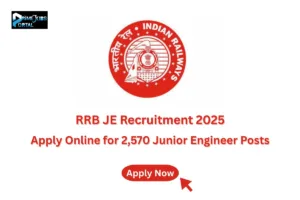In the current job market, covering letter skills are as important as having a good resume. A covering letter enables you to introduce yourself, explain why you are the best candidate for the job, and show how much you want the job. It may be the recruiter’s reason to stop and take heed if done correctly
This blog will walk you through the essentials of crafting an excellent cover letter that places you on top of the competition.
Why A Cover Letter Matters
Job seekers normally overlook the cover letter because they think of it as outdated or irrelevant. Nonetheless, managers still cherish them because a cover letter provides
- A personal introduction to you
- Context to your resume
- A chance to explain any career change or gaps
- Evidence that you’ve conducted research about the company and are interested in the position
Learning to compose a quality cover letter puts you ahead in hiring
Cover Letter Format
Proper format learning is essential. A quality cover letter should have:
1 . Header with Contact Information
Insert your full name, phone number, email address, and LinkedIn profile (if you have one). Below it, insert the date and hiring manager’s name, company name, and company address
2 . Salutation
Where possible, address the letter to a specific person (e.g., Dear Mr. Rao or Dear Hiring Manager). Never use general terms like “To whom it may concern
3 . Opening Paragraph Grab Attention
Start on a positive note by informing the reader why you are writing, the position you are applying for, and how you heard about the job. Optimize the content with the focus keyword how to write a cover letter
Example:
I’m writing to express my interest in the [Job Title] role at [Company Name]. As someone passionate about [Industry/Field], I’ve researched how to write a cover letter that not only highlights my skills but also aligns with your company’s values
4 . Middle Paragraphs: Highlight Skills and Experience
Use this paragraph to tell why you’re the best fit. Quote something concrete that you’ve done or something stated in the job listing. You can also say something about soft skills like communication, leadership, or problem-solving
5 . Why This Company?
Hiring managers want to see that you’ve done your homework. Use a recent achievement, project, or company value that resonates with you.
Example:
I’m particularly impressed with your recent focus on sustainability and innovation. I admire how [Company Name] supports eco-friendly practices in [Industry].
6 . Closing Paragraph Call to Action
Reiterate your interest and suggest the next step forward. Thank them for their time and request to know more about your application
Example:
Thank you for considering my application. I would welcome the opportunity to discuss how my background aligns with your team’s needs.
7 . Signature
A professional closing such as “Sincerely,” and sign your complete name
Writing Tips for a Memorable Cover Letter
Make it Personal for Each Job: Do not send the same letter to each application. Tailor it based on the needs of the job.
- Make it Short: One page is ideal — encapsulate the best
- Use Keywords: Incorporate words from the job posting. It helps hiring managers and ATS (Applicant Tracking Systems) as well
- Be You: Show your personality without compromising on professionalism.
- Proofread: Typos are a turn-off. Check grammar and spelling twice.
Avoid These Blunders
- Generic or outdated templates
- Repeating your resume word for word.
- Being too formal or too casual.
- Not adding the letter written to an individual
- Not demonstrating interest in the job or firm
Conclusion
Cover letter composition can seem intimidating at first, but once you master the format and the purpose, it is a powerful career search tool. A great cover letter connects your story, connects your experience to the position, and makes employers believe you are the best fit.
So the next time you’re interviewing for a job, take a few minutes to write a reflective, individualized cover letter it may be the deciding factor that gets you into the office to the interview








